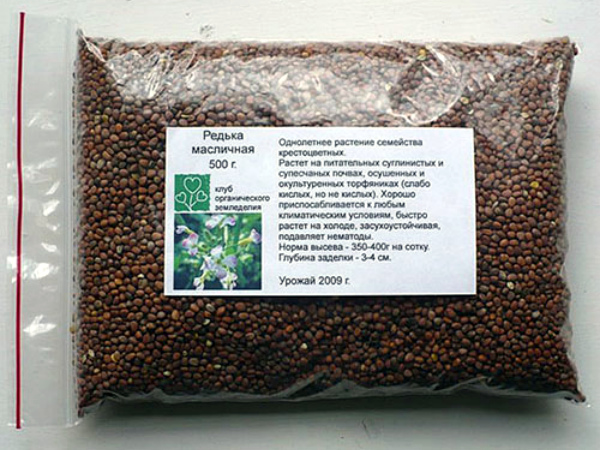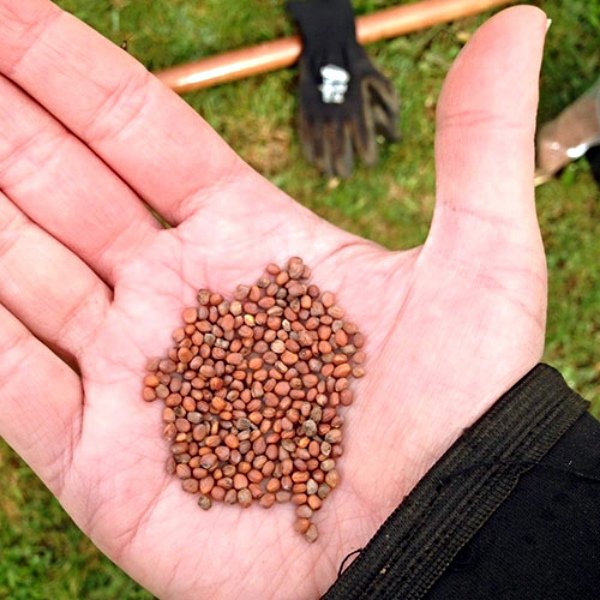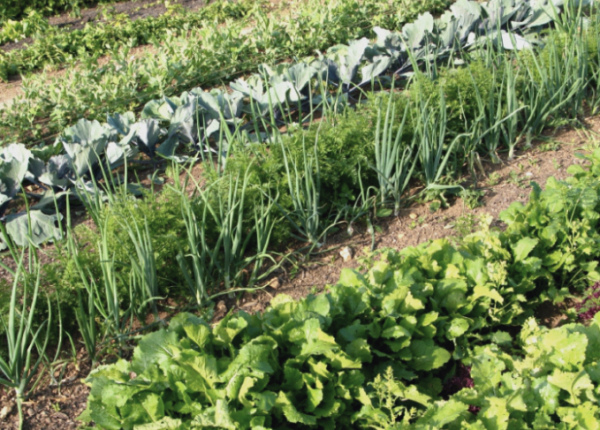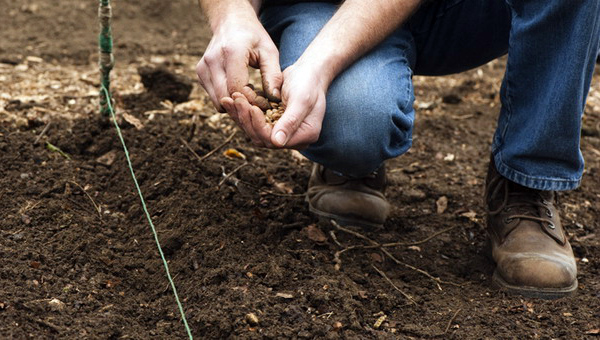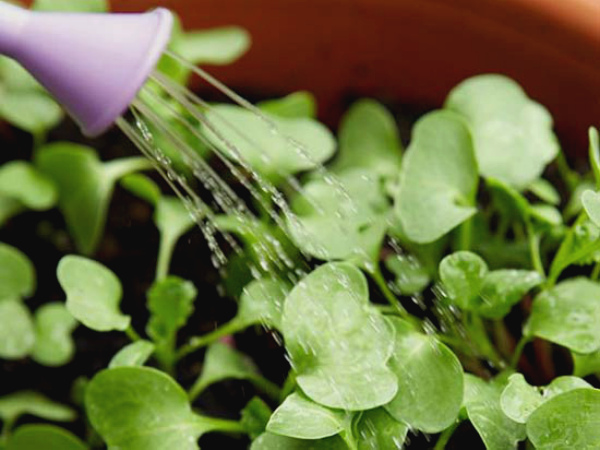The best ways to plant radish outdoors
Content
Preparing for landing
Radish seeds are very similar to radish seeds - they are also quite large and brown. When buying, you should pay attention to their color: rich brown indicates freshness, but gray discolored seeds were clearly stored for a long time, you should not risk sowing them, they most likely have below normal germination.
Usually the seeds are calibrated before sowing. You can plant any seeds, but a large root crop will grow from large ones, and who, who grows vegetables, wants to harvest a deliberately bad harvest? That is why the seeds are poured with salt water, and then filtered through a sieve with two-millimeter cells. The seeds that remain in the sieve are soaked in a solution of pale potassium permanganate a day before sowing in order to disinfect.
Some gardeners say that it is possible to soak the seeds in a fertilizer solution before sowing, but how it is better and whether it is worth doing so, you can only find out in practice. To the question of how to properly prepare the seed, everyone answers, based on their own experience. But even if you do nothing with the seeds, lay them dry in the ground, then, probably, not all will sprout, but root crops will grow in everyone that germinates. There is already a question about the size and taste of the resulting crop. Since gardeners want to get a rich harvest of tasty and healthy radish, they begin to work on this with seed.
Good and bad predecessors
Radish is unpretentious, it can be grown on any land. But anyone who wants to get a good harvest should plant it in an open area, where it will receive maximum sunlight and warmth. The soil should be neutral, loamy (or sandy loam) with a high humus content, with regular moisture.
You can sow radish where peas, beans, soybeans, lentils, beans, peanuts used to grow - legumes are considered good predecessors for all types of radish. It will grow well after cucumbers, squash, squash, pumpkin, eggplant, corn, pepper, onion and dill. But the bad predecessors are her cabbage (or cruciferous in other terminology) relatives: horseradish, carrots, beets. After them, you can plant the radish only after 4 years.
Landing scheme
A radish, planted along the edges (borders) of beds with tomatoes, potatoes, onions or cucumbers, grows well. If she is given her own separate area, then it is usually sown in rows. The most convenient planting scheme for radish is in nests and rows.
This means that on the prepared bed you need to make grooves with a depth of 2 cm, and leave 30–35 cm between them. In each groove, place 3 seeds in a nest every 8–10 cm, this is for early and early ripening varieties. When they want to keep the radish for the winter, the late varieties are planted at a distance of 15 cm between the nests.About a week after emergence, one of the strongest sprouts is left in each nest, and the rest are simply removed.
There is another opinion on this matter. Some gardeners prefer to plant radish not in nests of several pieces, but one seed at a time. Breaking through the seedlings, we disturb all the sprouts, and not only those that we remove, the remaining sprout for this reason slows down in growth and development. This can be taken into account, but then you need to be prepared for the fact that there will be too large gaps in the row due to the fact that not all seeds will sprout. Although, radish can be sown later. It can be sown from the second half of March, it is then that it is recommended to sow early small-fruited varieties. Early ripening varieties are sown from April 25 to early May, winter black round radish is sown from late June to early July, and the latest varieties are sown in July.
Watering the radish
After laying the seeds in the ground, the grooves are filled up, tamped so that the soil fits snugly against them from all sides, and then moistened. The radish should grow in moist soil all the time, moreover, watering should be regular.
Usually, the early radish is watered weekly, and the late, which is going to be stored for the winter, is watered less often, only 4 or 5 times per season.
With insufficient watering, the root crop becomes too tough and tasteless, it practically loses its edibility. If you allow the soil to dry out, and then water, then the root crop will certainly crack. Uneven watering or a lack of moisture can lead to the fact that a two-year-old vegetable, which in the first year of life should grow a root crop, and bloom and bear fruit in the second year, can immediately release an arrow, practically without forming a root crop. So even watering is very important when growing this vegetable.
Mulch will help preserve moisture in the soil, so the seedlings are mulched with compost, peat or straw. Mulch will prevent weeds from growing, which means that you will have to weed much less often.
Fertilizers
Delicious large radish will grow in fertile humus-rich soil. When preparing a bed for digging, compost or humus and complex mineral fertilizers are usually added, wood ash must be added. It is very convenient if the soil was well fertilized for the predecessor crop, then digging up a plot in the fall, you can limit yourself to a minimum of fertilizers. You should never apply unripe manure under the radish; from such fertilization, the root crop will branch out.
Since the ripening period in early and early ripening varieties is very short, they are fed with nitrogen fertilizers, usually lime-ammonium or sodium nitrate is used. The first time feeding is applied after the appearance of the second leaf, and the second time - a week later. Late varieties (if there is such a need) are fed weekly, they stop doing this 3 weeks before harvest. As a rule, the full range of mineral fertilizers is alternated with nitrogen fertilizers, since the need for nitrogen is great.
Video "Sowing radish"
This video is about the timing of planting and the technology of sowing radish using a very convenient device.

